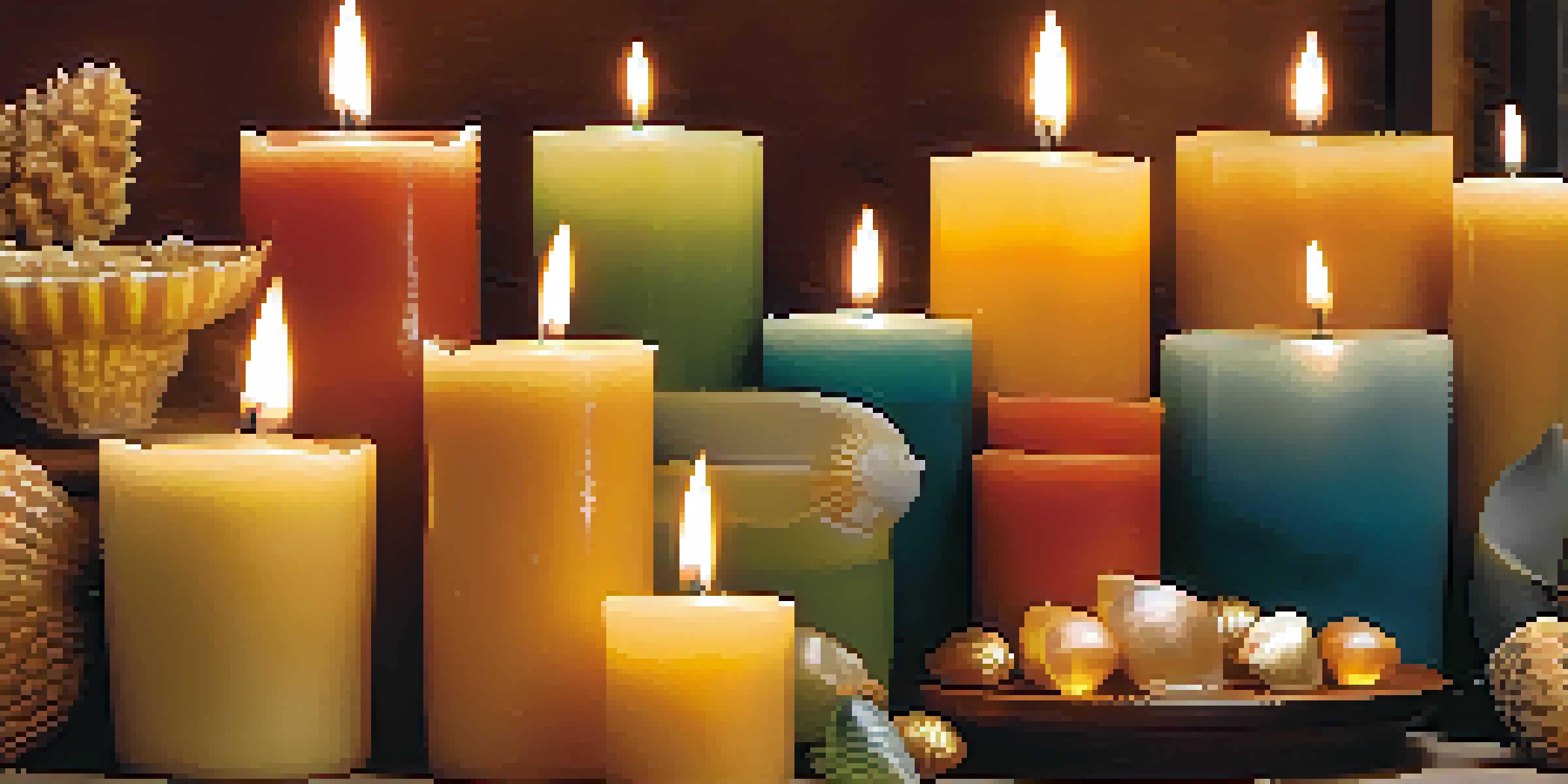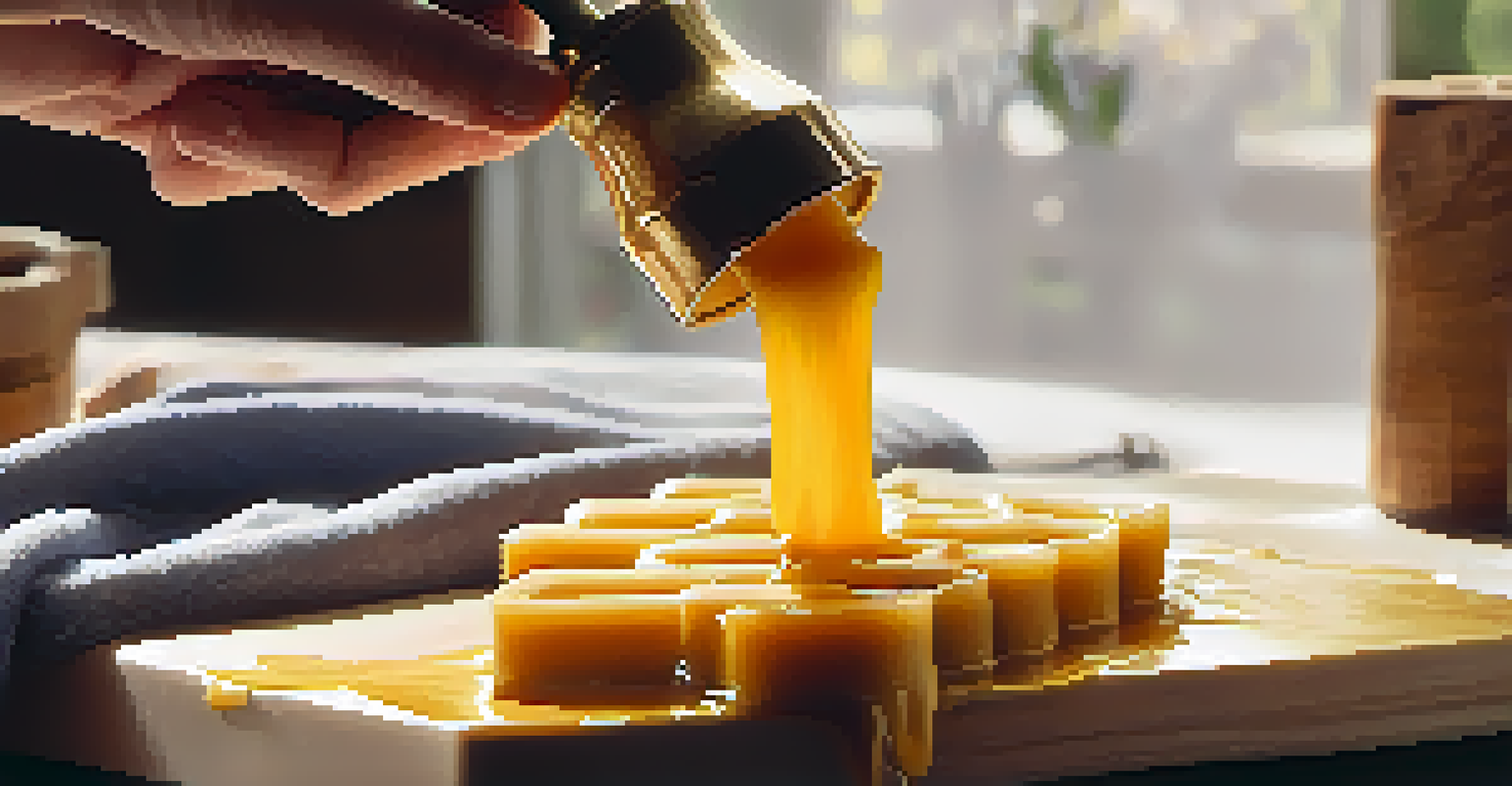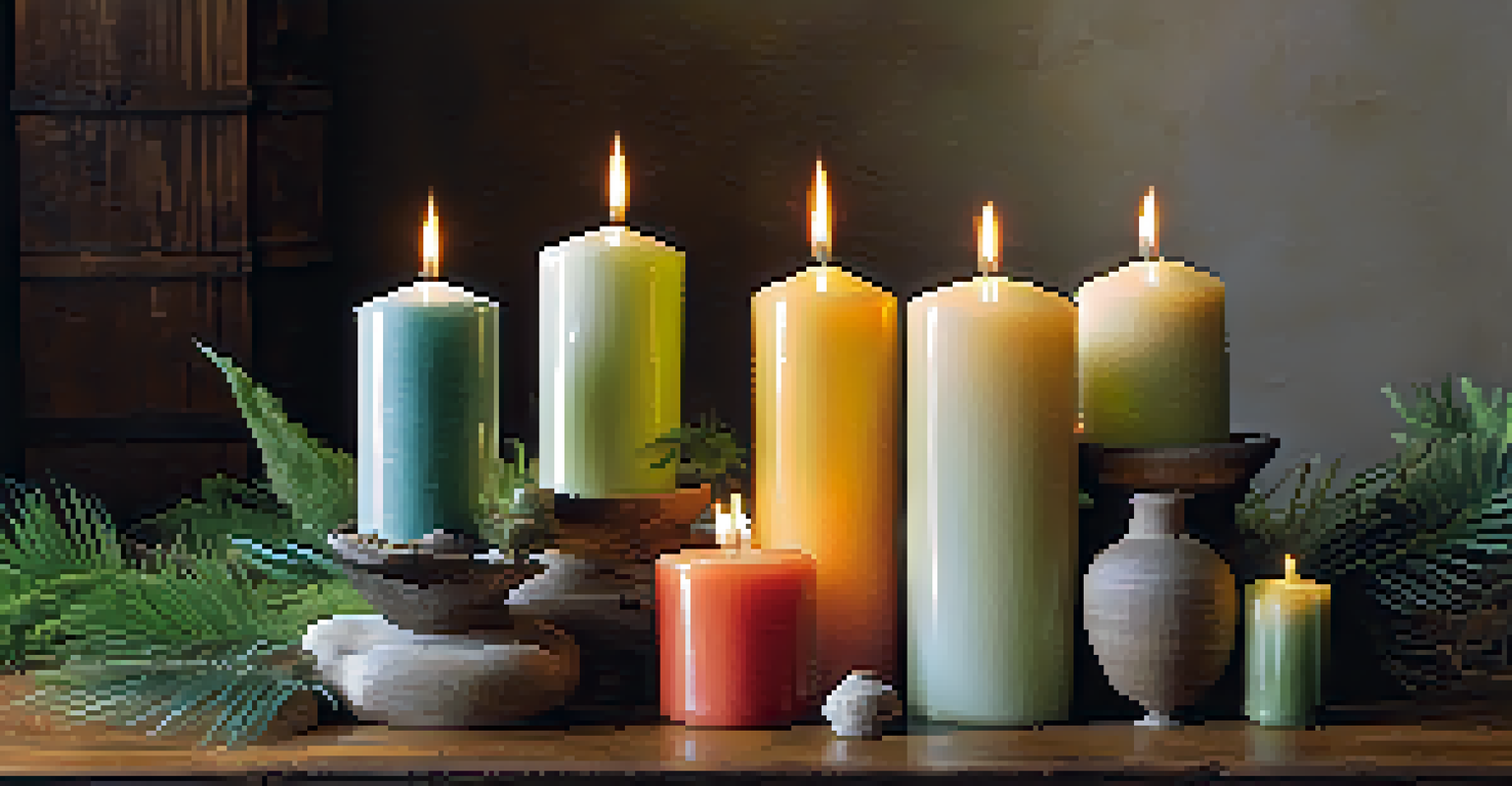Understanding Different Types of Candle Wax for Crafting

An Introduction to Candle Wax Types in Crafting
When it comes to candle making, the type of wax you choose plays a crucial role in the final product. Different waxes have unique properties that affect burn time, scent throw, and appearance. Whether you're a seasoned crafter or a beginner, understanding these differences can elevate your candle-making experience.
Crafting is not just about making something; it's about the joy of creating and the passion behind it.
Candle wax comes in several varieties, each with its own characteristics. From natural options like beeswax and soy wax to synthetic choices like paraffin, knowing what each type offers helps you select the right one for your project. This guide will break down the most popular candle wax types and their uses.
By the end of this article, you’ll have a clearer understanding of which wax suits your needs best. So, let’s dive into the world of candle wax and discover what makes each type special!
Beeswax: The Natural Choice for Candle Enthusiasts
Beeswax is a favorite among natural candle makers, and for good reason. It burns longer than many other waxes, producing minimal smoke and soot, making it a healthier option for indoor use. Plus, its natural honey scent adds a delightful aroma without the need for additional fragrance.

Crafting with beeswax can be a bit more challenging due to its higher melting point, but the results are often worth the effort. Many crafters appreciate its golden hue, which lends an organic look to candles. You can also mold beeswax into various shapes using simple techniques.
Choose the Right Candle Wax
Selecting the appropriate wax depends on factors like burn time, scent throw, and whether you prefer natural or synthetic materials.
If you're looking for a sustainable option, beeswax is an excellent choice as it's a byproduct of beekeeping. By using beeswax, you support local beekeepers and contribute to the health of bee populations. It's a win-win for both you and the environment!
Soy Wax: Eco-Friendly and Versatile
Soy wax has gained immense popularity among eco-conscious crafters, and it’s easy to see why. Made from soybean oil, this renewable resource is biodegradable and burns cleanly, making it an excellent alternative to paraffin wax. It also holds fragrance well, offering a strong scent throw.
The best part of making something is sharing it with others.
One of the appealing aspects of soy wax is its ability to blend easily with dyes and fragrances, providing endless possibilities for customization. Whether you want vibrant colors or unique scents, soy wax can accommodate your creative vision. Plus, it has a lower melting point, making it easier to work with.
Using soy wax in your projects not only benefits your crafting but also supports sustainable agriculture. By choosing soy, you're helping to reduce your carbon footprint while creating beautiful candles that friends and family will adore. It's a perfect choice for environmentally friendly crafting!
Paraffin Wax: The Most Common Candle Wax
Paraffin wax is the most widely used wax in candle making, primarily due to its affordability and accessibility. It’s derived from petroleum, which gives it a smooth finish and excellent scent throw. This makes it a popular choice for mass-produced candles found in stores.
While paraffin wax is versatile and easy to work with, it does have some downsides. It can produce soot and may not burn as cleanly as natural alternatives. Additionally, because it's a byproduct of oil refining, its production raises some environmental concerns.
Explore Various Wax Types
Understanding the unique properties of waxes like beeswax, soy, and gel can enhance your candle-making experience.
However, many crafters still incorporate paraffin wax into their projects, often combining it with other waxes for improved performance. If you're looking for a reliable and budget-friendly option, paraffin wax might just be what you need for your next candle-making endeavor.
Palm Wax: A Unique Texture and Finish
Palm wax is another natural option that offers a distinct finish. Derived from palm oil, this wax creates beautiful, crystalline patterns when it cools, giving candles a unique aesthetic appeal. It is often used for decorative candles that stand out on shelves.
One of the key benefits of palm wax is its excellent scent throw, similar to soy wax. It burns cleanly, making it an appealing choice for those who want to enjoy aromatic experiences without the negative environmental impacts of paraffin. However, it's important to source palm wax responsibly to avoid contributing to deforestation.
Incorporating palm wax into your candle-making projects can elevate your crafts, offering both beauty and functionality. Just be sure to research suppliers to ensure that your palm wax is sustainably sourced, aligning your crafting with environmentally friendly values.
Gel Wax: The Creative Alternative for Candle Artists
Gel wax is a fascinating option for candle makers looking to experiment with their creations. Unlike traditional waxes, gel wax has a translucent quality that allows for unique designs and even encapsulated objects, like shells or decorative stones. This opens up a world of creative possibilities.
One of the standout features of gel wax is its ability to hold a variety of scents, making it ideal for scented candles. However, working with gel requires some specific techniques, as it has a different melting point and viscosity than other waxes. This makes it essential to follow guidelines for successful crafting.
Sustainability in Candle Making
Opting for natural waxes like soy and beeswax supports eco-friendly practices and contributes to sustainable crafting.
Using gel wax can take your candle-making skills to the next level, inspiring you to think outside the box. If you love to craft with a creative twist, gel wax could be the perfect medium to explore and showcase your artistic flair.
Choosing the Right Wax for Your Project
With so many types of candle wax available, how do you choose the right one for your project? Consider factors like the desired burn time, scent throw, and whether you prefer natural or synthetic materials. Each type of wax has its advantages and challenges, so understanding your personal preferences is key.
If you're looking for sustainability, natural waxes like soy and beeswax are excellent choices. For intricate designs or decorative candles, gel wax can add a unique touch. On the other hand, if you're on a budget, paraffin wax might be the most practical option.

Ultimately, the best wax for your project will depend on your crafting goals and values. Don't hesitate to experiment with different waxes to find the perfect fit for your creative vision; after all, the joy of crafting lies in exploration and discovery!
Conclusion: Elevate Your Candle Crafting Skills
Understanding the various types of candle wax can significantly enhance your crafting endeavors. By knowing the properties and uses of each wax, you can make informed decisions that lead to better results. Whether you're making candles for yourself or as gifts, the right wax can make all the difference.
As you experiment with different wax types, take note of how they affect your candles in terms of burn time, scent, and appearance. This hands-on experience will deepen your appreciation for the craft and help you refine your skills. Plus, sharing your creations with others can inspire them to explore candle making too.
In the end, crafting candles is not just about the end product; it's about the joy of creating something beautiful. Enjoy the process, embrace your creativity, and let your knowledge of candle wax guide you toward crafting masterpieces!